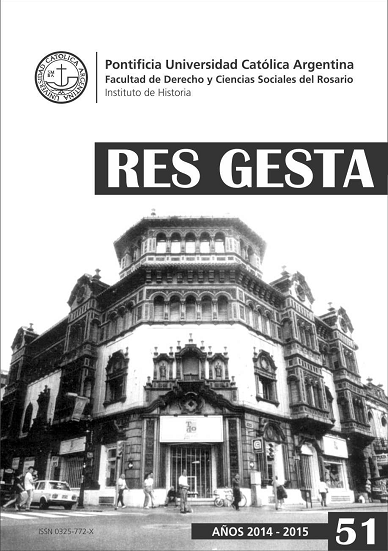Historia de la leche: El caso de la colonia Bernstadt-Roldan y el surgimiento de la Cooperativa de Tamberos de Rosario y su zona de influencia (COTAR)
Palabras clave:
Santa Fe, dairy agribusiness, social historyResumen
Roldán was introduced to agricultural and livestock production as a result of the work of the first Swiss families that began arriving in 1870. Through a productive system which was deeply rooted in their country, the Swiss immigrants laid the foundations of dairy production that would later expand into industrial development and would meet its zenith in the mid 20th Century. This process started as an activity which would allow each family to subsist. The dairy farms held between 2 and 5 animals, typical of farming areas, which were laboured with provisions either given by the “Compañía de Tierras del Central Argentino” (“Central Argentine Lands Company”) or purchased by the farm owners. In the mid 1880’s the activity began to resemble an industry with the production of a great number of dairy products and their commercialization, accompanying the process of soil transformation to improve pasture land to raise cattle and for grain crops.
Thanks to those Swiss pioneers who establish Bernstadt and to the Basque inhabitants who arrived in the area towards the end of the 19th Century, Roldán became the most prosperous dairy region of the country, particularly in the 1920's and retaining that privilege for the next 40 years.
The commercialization of the dairy products, the defence of prices and of the labour conditions on the dairy farm became sources of conflict which led to the cooperative organization of those dairy farmers in order to resolve the situation.
The most important cooperative movement of the dairy farmers occurred in the difficult 1930’s, when, on the initiative of a group of dairy farm owners and workers from Roldán, a committee was established in that city to obtain the cash payment of their production and to achieve qualitative and quantitative improvement of the industry. The claim for the dairy farm workers’ rights would come to an end in 1939 with the creation of “Cooperativa de Tamberos de la Zona de Rosario” (COTAR). This cooperative became a large protective umbrella under which many small and medium producers could exist together (and they still do).
Descargas
Descargas
Publicado
Cómo citar
Número
Sección
Licencia











